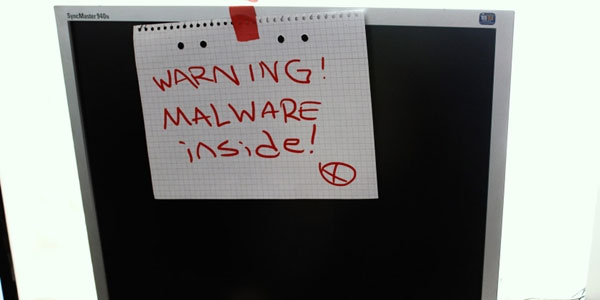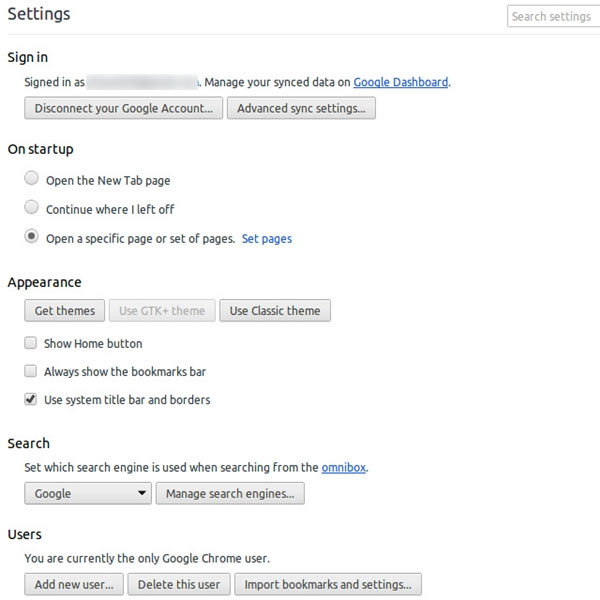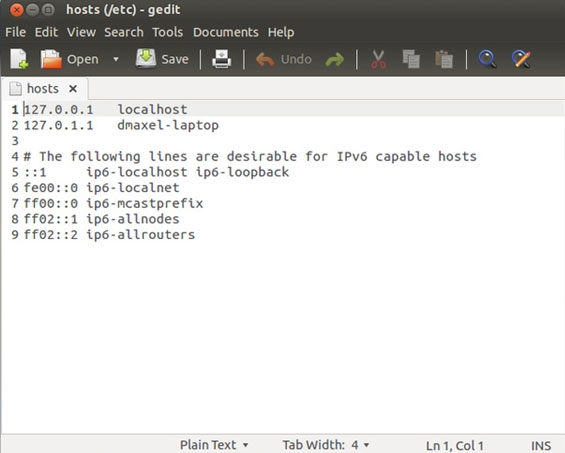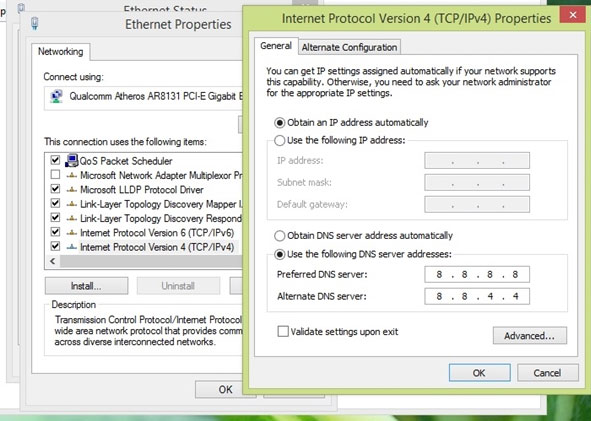3 things to do right after removing the malware
After removing the malware you need to change some of the system settings, which were previously altered by malicious software. The following article will show 3 important things that you need to do immediately after removing malware from your computer.

Reset some customizations in the web browser
You need to check your browser to see if it has been changed by accessing your browser's installation directory or dialog box.

In turn, check the browser homepage, the browser's default search engine and browser add-ons. If changes are detected, proceed to reset them.
You can refer to the suggestion of setting up the default search engine for Google Chrome, Firefox and Internet Explorer browsers.
If you find that the browser has installed the toolbars, then uninstall them immediately with the Windows Add / Remove Programs tool available in Windows.
Hosts file system
All operating systems have a Hosts file to store the IP information of the servers and domain names that are pointing to. Installing malware on your computer can change the operating system's Hosts file information, which will easily allow malware to take you to a phishing site when you proceed. Access to a regular web address. So you should check the Hosts file to make sure Internet access is safe.
Depending on the operating system you are using, you can find the Hosts file at different paths, for example:
Windows: C: Windows system32 drivers etc hosts
Mac OS X and Linux: / etc / hosts

When you edit the Hosts file again, you need to set up editing at the highest administrative level by right-clicking on the editing tool and selecting the 'Run as administrator' command on Windows. On Mac and Linux, you must use the 'sudo' command to do the job.
DNS settings
DNS stands for Domain Name System, a name resolution system invented in 1984 for the Internet and one of the industry standards of ports including TCP / IP. DNS is the key to many network services such as Internet browsing, mail server, web server .
The next thing to do is check the DNS settings on the computer. You can check your DNS settings on Windows by right-clicking on the network icon in the Taskbar and selecting Open Network and Sharing Center> Change adapter settings, then right-click the network icon that is connecting and select Properties. A dialog box will appear, move to Internet Protocol Version 4 (TCP / IPv4) and click Properties.

If nothing changes, you can set your device's DNS to DNS Google to make sure your browsing process is smooth.
Conclusion
If you go through 3 jobs, but your computer is still unstable, try downloading and installing a powerful Antivirus browser like Kaspersky , Norton or AVG (the highest version with 30 days of trial) to proceed. Scans the entire computer. This will make it more secure to ensure computer safety.
You should read it
- How many types of malware do you know and how to prevent them?
- 5 types of malware on Android
- Instructions for removing malware from Steam
- What is Safe Malware? Why is it so dangerous?
- How to Remove Malware from a Mac
- How to Edit the Hosts File on a Mac
- Steps to remove malware 9o0gle. com
- 5 signs of computer infection with malware
May be interested
- What is Malware? What kind of attack is Malware?
 guide you how to recognize malware, how to prevent malware and as well as what to do when you encounter a malware infected website.
guide you how to recognize malware, how to prevent malware and as well as what to do when you encounter a malware infected website. - The 4 most common ways to spread malware today
 if there's one thing that poses a threat to all users of technology, it's malware. this malware can be extremely dangerous, harmful, and comes in many different forms.
if there's one thing that poses a threat to all users of technology, it's malware. this malware can be extremely dangerous, harmful, and comes in many different forms. - Learn about polymorphic malware and super polymorphism
 as mentioned in previous articles, malware (malware) has become a big problem. unrighteous people are taking advantage of ransomware, keyloggers, bank trojans and cryptojacker to redeem themselves from the victims.
as mentioned in previous articles, malware (malware) has become a big problem. unrighteous people are taking advantage of ransomware, keyloggers, bank trojans and cryptojacker to redeem themselves from the victims. - What is Goldoson Malware? How can you protect yourself?
 an example of malware is goldoson. the malware has infected more than 60 legitimate google play apps, which have been downloaded more than 100 million times in total.
an example of malware is goldoson. the malware has infected more than 60 legitimate google play apps, which have been downloaded more than 100 million times in total. - What is rooting malware? What can you do to protect yourself?
 rooting malware works by gaining root access to the victim's phone. this gives the malware more control over the phone.
rooting malware works by gaining root access to the victim's phone. this gives the malware more control over the phone. - Some simple tricks to deal with Malware
 malware seems to become more and more intelligent and causes more incalculable consequences than before. installing malware detection tools (malwarebytes, hijackthis, combofix ...) on the computer is not a redundant task. but in some cases, for many reasons (blocked by malware itself) these tools are
malware seems to become more and more intelligent and causes more incalculable consequences than before. installing malware detection tools (malwarebytes, hijackthis, combofix ...) on the computer is not a redundant task. but in some cases, for many reasons (blocked by malware itself) these tools are - What is Malware Joker? How to fight Malware Joker?
 joker malware is another threat to your privacy and sensitive information. recently, it attacked android mobile devices globally, resulting in the need to remove some applications from the google play store.
joker malware is another threat to your privacy and sensitive information. recently, it attacked android mobile devices globally, resulting in the need to remove some applications from the google play store. - 5 types of malware on Android
 malware or malware can affect mobile devices as well as computers. a little bit of knowledge and proper precautions can protect you from threats like ransomware and sextortion scam.
malware or malware can affect mobile devices as well as computers. a little bit of knowledge and proper precautions can protect you from threats like ransomware and sextortion scam. - Things to know about Gauss malware
 last thursday, kaspersky labs announced the discovery of a new malware called gauss, which specialized in stealing information about bank accounts, finance, and connections to malicious codes like stuxnet and flame.
last thursday, kaspersky labs announced the discovery of a new malware called gauss, which specialized in stealing information about bank accounts, finance, and connections to malicious codes like stuxnet and flame. - Modular Malware - New stealth attack method to steal data
 some malware variants can use different modules to change the way they affect the target system. so what is modular malware and how does it work?
some malware variants can use different modules to change the way they affect the target system. so what is modular malware and how does it work?










 How will Safely Remove harm the device?
How will Safely Remove harm the device? 8 unexpected uses of Task Manager
8 unexpected uses of Task Manager Interesting origin of Bluetooth terminology
Interesting origin of Bluetooth terminology The decision to 'pocket' before choosing to buy a laptop
The decision to 'pocket' before choosing to buy a laptop The fate of the iPhone is robbed
The fate of the iPhone is robbed Tips to save time and avoid risks when working with computers
Tips to save time and avoid risks when working with computers